The Differences Between UX and Product Design
Some differences between UX and product design are subtle. Knowing them is vital if you want to break into the design industry or hire a designer for your company.

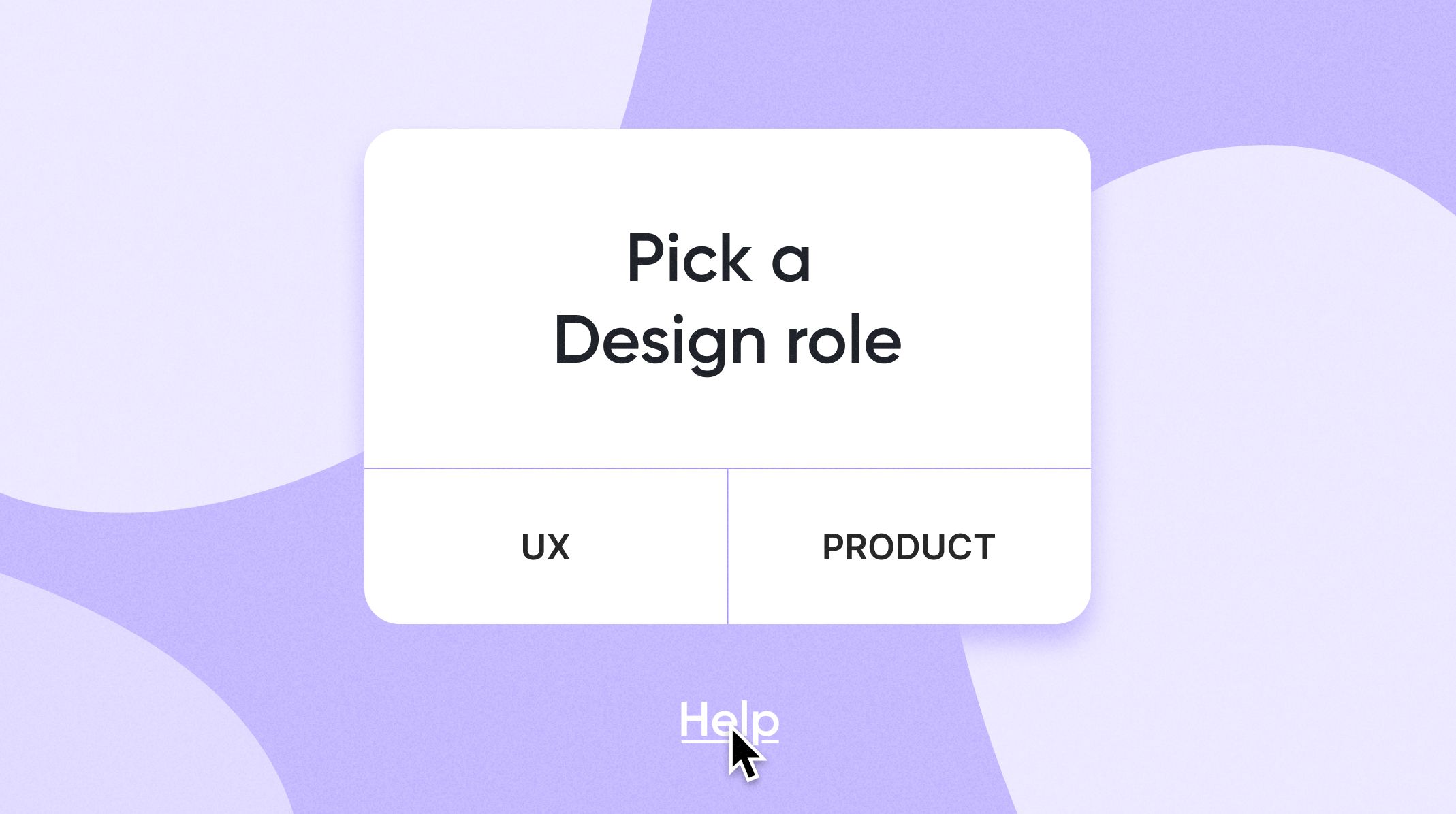
The Differences Between UX and Product Design
With technology now taking over much of the world, businesses are looking for ways to make products more user-friendly and accessible with the help of UX and product design. But, what’s the difference between those two design disciplines?
In the age of digital marketing, UX designers help companies create more user-friendly websites or software applications. Product designers, on the other hand, work on improving consumer experience and next-generation technologies.
While these two types of design might sound very similar at first, UX and product design have some significant differences in how they operate.
Let's look at UX and product design and the contrast between the two disciplines.
What is UX design?
User experience (UX) design refers to the method design teams employ to develop products that offer meaningful and pertinent user flow experiences. UX design includes branding, usability testing, and functional components in obtaining and integrating the desired result.
UX designers work to create an environment for users that provides value and delivers a positive experience to users.
The different elements of UX design
UX design combines various elements that determine how effectively products provide relevant user experiences. The following five steps of UX design help UX designers turn an idea into a working product.
Here are the different elements of UX design:
- Surface: At the surface level, user interface design includes all visual elements of an application. It consists of the images, buttons, and text on a web page or programming interface.
- Skeleton: The skeleton is the underlying structure of the product's static interfaces, such as a website, software program, or device, and is the structure that holds an interface together. UX designers must understand how to create a skeleton that doesn't decrease functionality.
- Structure: The structure defines how the various features and functions of the product fit together. User experience designers consider how their products interact with users. They look at how people perceive a product's usability and understand what elements need to get created for user navigation.
- Scope: The purpose of the scope of a product includes anticipating potential functions users will want and designing a product's structure based on its strategy that stays focused on those specified needs.
- Strategy: At the strategy level, UX designers figure out how to align all the product's functionalities with a company's strategic vision. They must consider what the people running the product hope for and what the consumers hope to gain.
Why is UX design important?
The goal is to create a practical, efficient, ideal user experience that delivers value.
The UX design process also aims to increase customer happiness and loyalty by enhancing a product's interaction's utility, usability, and enjoyment.
Other advantages of UX design include that it increases the conversion rate for a business. UX is important no matter what product you’re creating, be it a type of wearable, an app, or a website.
If you have a bad UX, then it will result in fewer website visitors and fewer purchases. A lack of sales means your business will struggle to thrive and grow.
UX vs. UI design
Next to UX design, there’s also UI design. UX and UI (user interface) designers use similar methods and techniques to create web pages and apps or other interfaces that are functional, easy to use, and aesthetically pleasing.
While UX design focuses on the user's experience when using a product, UI design primarily uses attractive images, graphics, and text to make it easy for users to interact with the sites or products. UX design looks at how well users can navigate a web page or application, while UI design is more concerned with aesthetics and how well the site performs.
One similarity between the two is that they both make use of rapid prototyping in a bid to ensure all the bugs are ironed out before launch.
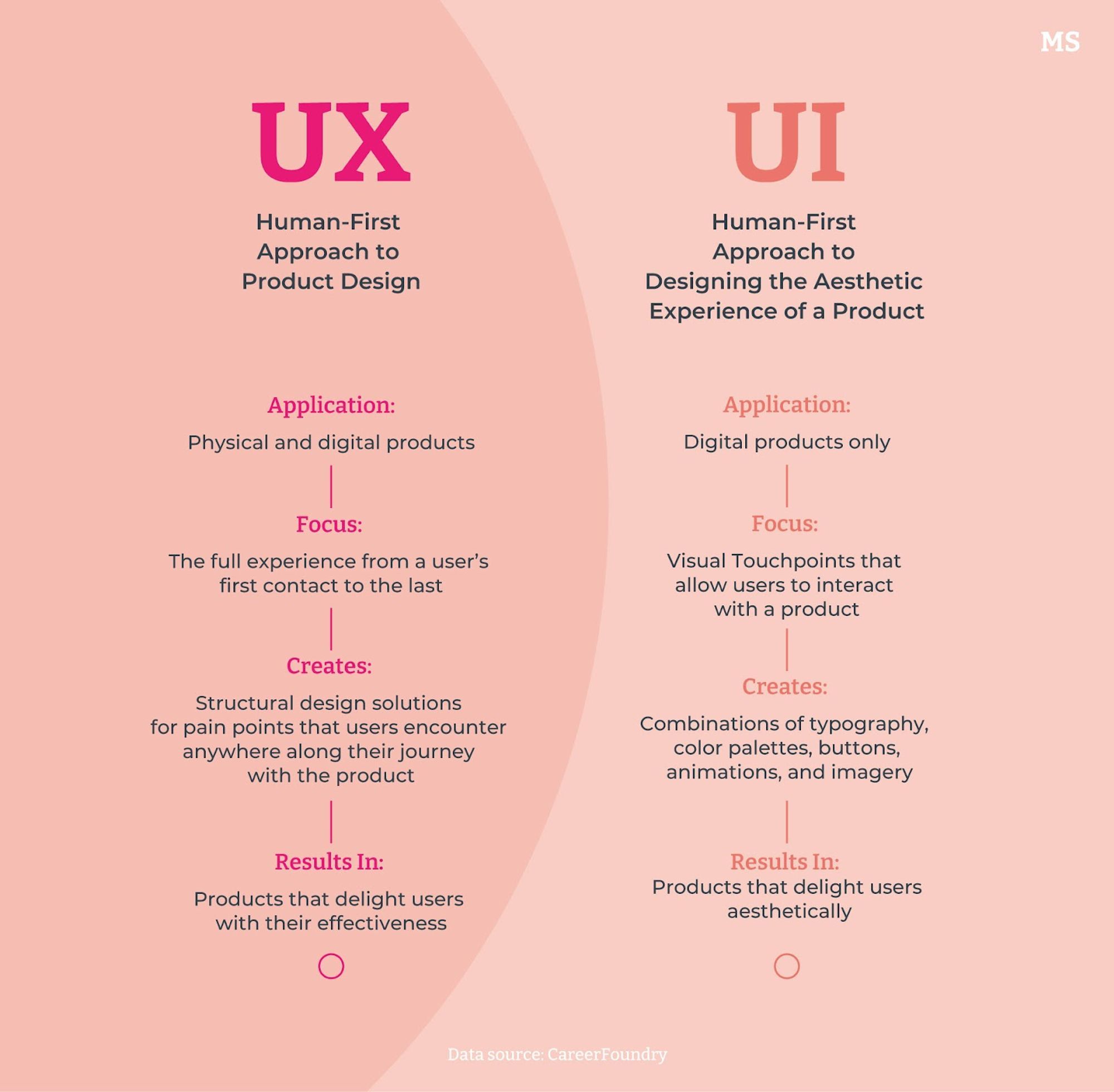
An example of great UX design
The user experience of Amazon's website is great because its navigation has unique functions that enable you to expand the navigation panel, remove items from a shopping cart, or add an item to a wish list. The simple design of their toolbar helps Amazon users browse products, create lists, and check for prices.
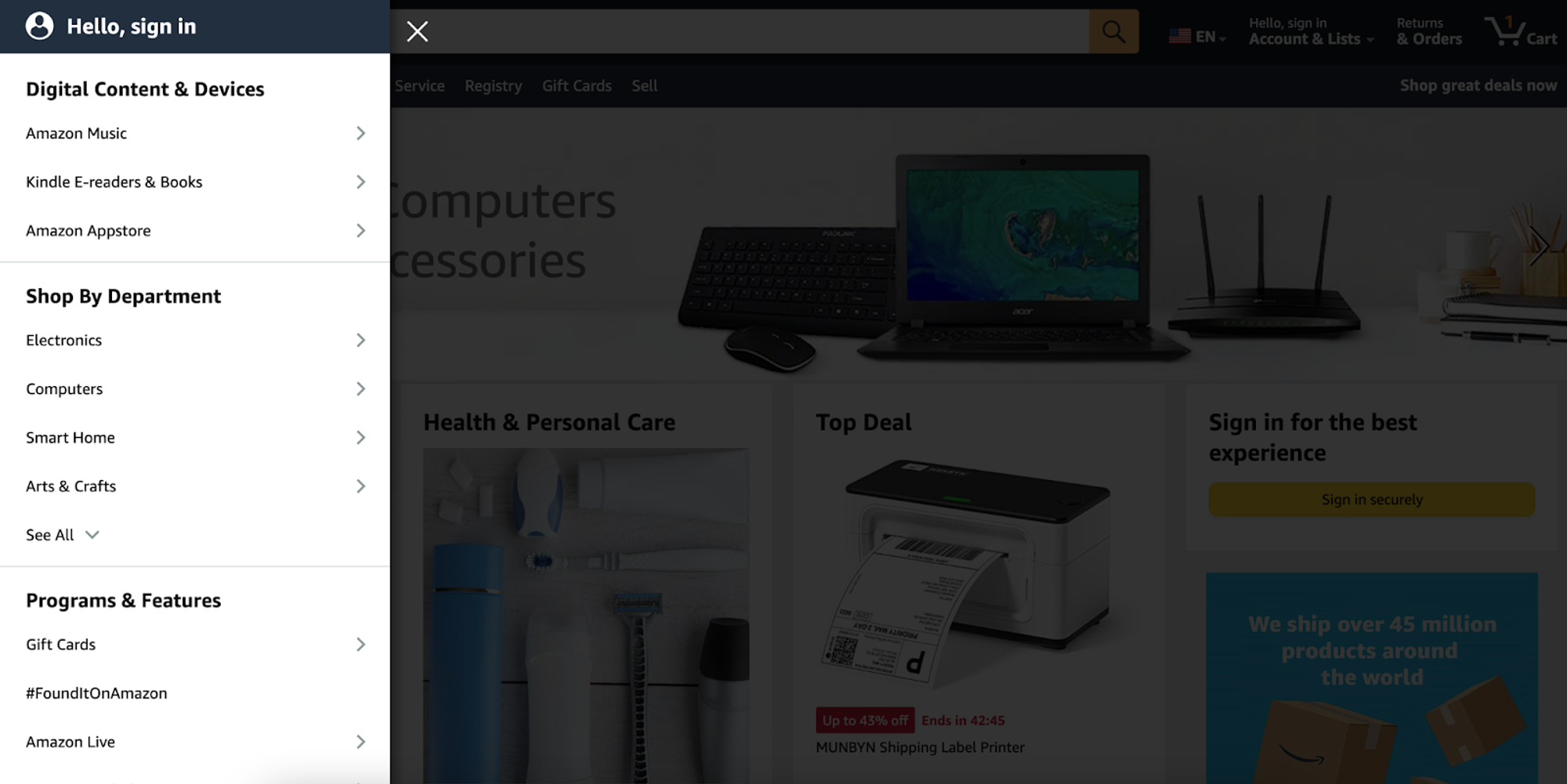
What is product design?
Product design refers to how companies create products that solve consumer problems and satisfy user needs. Product designers interact with people, products, and the environment in the design thinking process.
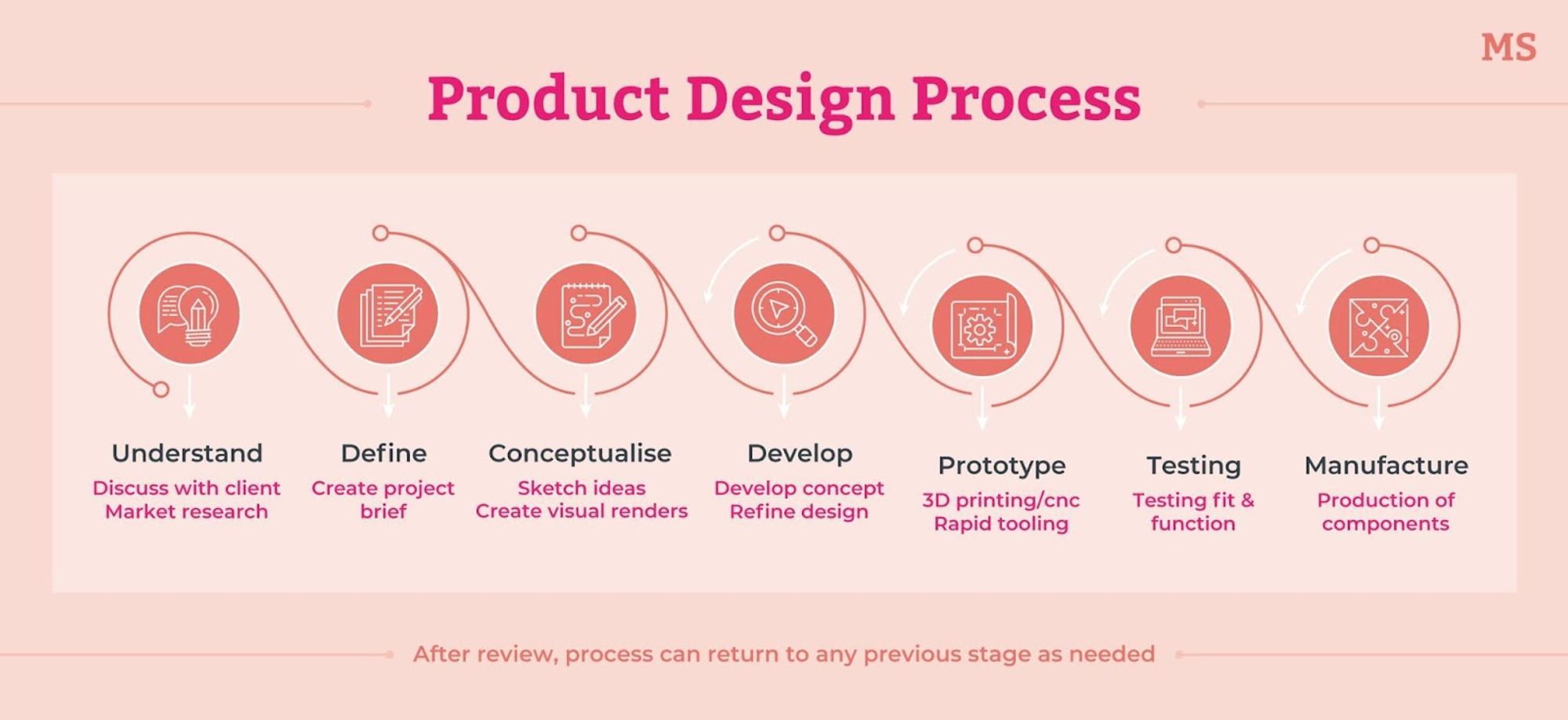
The different elements of product design
The following three elements of product design help create products that meet consumer needs:
- Function: Product designers consider how people will use a product and which features will help them accomplish the goals they set out to achieve. In designing products, product design teams focus on how well their products meet the user's needs. They also try to anticipate what functionality users are willing to purchase.
- Style: On top of considering functionality, product designers try to create aesthetically pleasing products. They may incorporate beautiful designs, color schemes, and graphics into the product.
- Cost: Product designers must consider how much a product costs and determine whether the price is fair for customers. They look at how well a product could compete against similar products that are already available for purchase.
Why is product design important?
Product design focuses on creating a successful product that meets client needs with specific features and functions. Designers must consider the constraints of economic, legal, marketing, and user interfaces in the design process when creating a digital product.
Product design is important because it helps to shape the entire product experience into a positive one and triggers interest in the product. Having a great product design helps you to make sales and encourages customer loyalty.
An example of great product design
Apple iPhone is an awesome product design example. Apple created a smartphone that brought a functional experience to the market and has dominated the market share since its launch.
The iPhone's user-friendly features include a simple interface, advanced features like Siri voice control, advanced security features such as FaceTime video chatting, easy access to email attachments via the mail app, and multitasking capabilities. Apple's focus on making smartphones intuitive has led to high customer satisfaction.

UX design vs. product design: the differences
UX and product design are closely related and often use the same approaches to achieve business goals. However, there are numerous disparities between the two disciplines.
Here are the differences between product design and UX design in terms of:
- Job requirements & responsibilities
- Focus
- Working method
- Skillset needed
- Tools needed
- Qualifications & training
- Expected salary
- Trends
Job requirements & responsibilities
UX designers are primarily concerned with usability and interactivity features for websites, apps, and digital interfaces in the entire design process. They aim to create a user experience that functions well and allows users to navigate the product quickly.
A Product designer’s job focuses on meeting consumer needs by creating tangible products tailored to client needs.
Focus
UX designers are primarily concerned with how people interact with products, while product designers are concerned with how the product looks and its overall design. UX focuses on the practicality of a product and leads teams to create solutions.
Product design is more involved with aesthetics and style.
Working method
UX designers work to improve the user's experience with the product, while product designers must consider the design's cost, function, and overall usability. UX designers work closely together with other teams to create an end product.
Product designers usually work alone or as part of a team to create a design for a specific product.
Skillset needed
UX designers must have design skills to create visually appealing and user-friendly designs. Product design requires technical skills in manufacturing, software development, and engineering knowledge.
Tools needed
UX designers must have experience with graphic design software, prototyping tools (such as ProtoPie), and web applications.
Product designers need to have experience with 3D modeling software, CAD (computer-aided design), or industrial design tools. CAD creates digital files of products that are ready for manufacturing.
Qualifications & training
UX designers learn about user experience design via digital web design programs and by attending a UX design-related course. Qualified UX designers often need a bachelor's degree in UX design or a related field and adequate experience in the design career.
Product designers gain expertise in product development from industrial design, mechanical engineering, or software development. Product designers must have a degree and technical training in engineering, manufacturing, or product development.
Expected salary
A UX designer's average salary is around $95,000 per year. In contrast, a product designer's average salary is about $80,000 annually (in the USA).
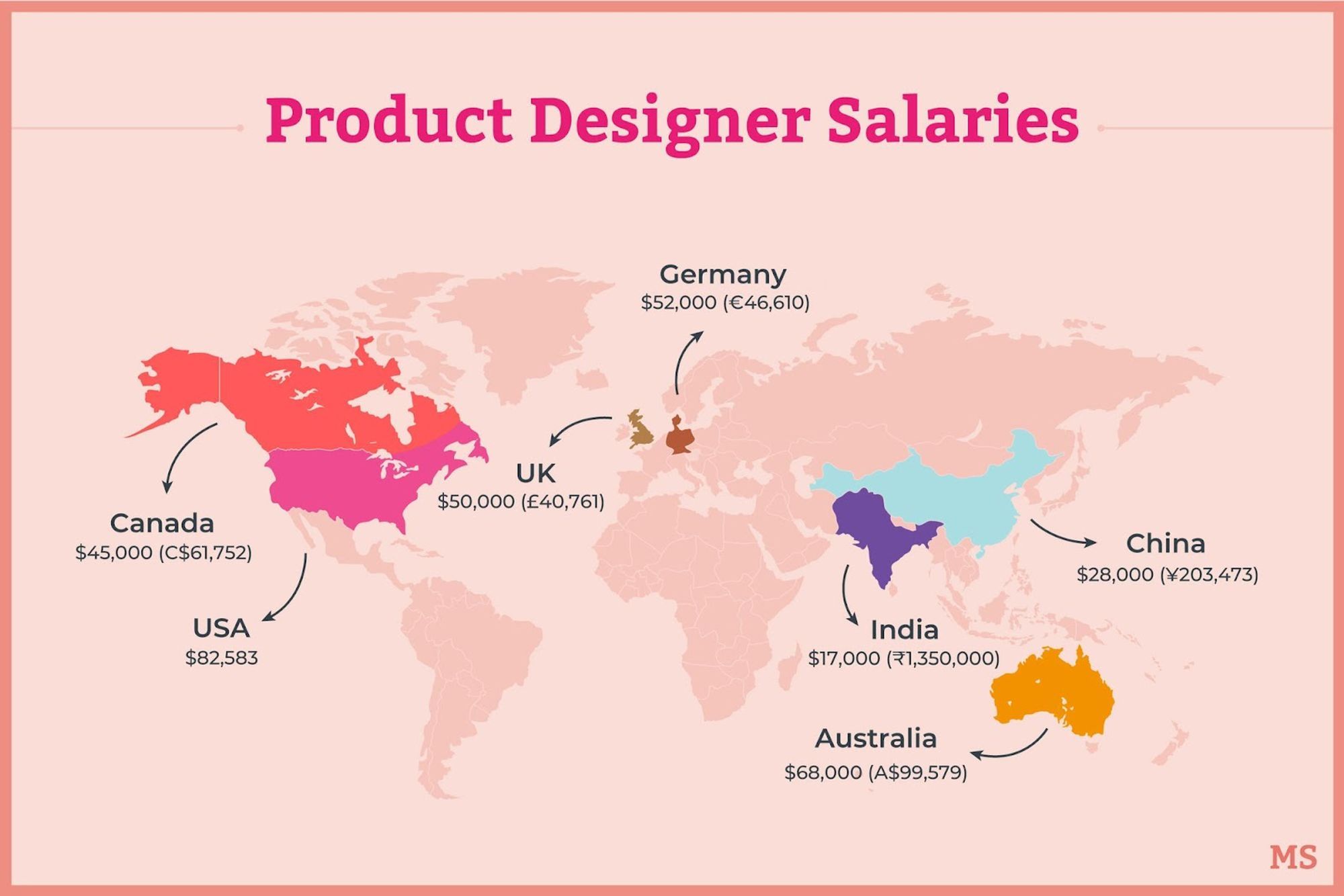
Trends
The use of technology has influenced UX design, and we’ve seen a trend toward rapid and realistic prototyping.
New tools designed for web design have made the process more efficient and attainable. Mobile apps and e-commerce sites continue to develop rapidly, creating a high demand for UX designers.
The most significant design trend in product design is the shift from a physical focus on making products to creating intangible digital products, such as websites or apps.
Wrapping up
Product and UX design help create a product that satisfies the end user's needs in the ever-changing business world. Although the two may have similar goals, the differences between the two are huge and need to be taken into account when deciding between the two.
The main differences between the two are job responsibilities and the focus of the work.
UX designers are responsible for usability, whereas product designers ensure the product meets the consumer's needs. UX designers focus on the interactions within the product, and product designers focus on the overall aesthetics of the product.
Both the UX designer and the product designer roles are important for successful product development.
Looking to improve your UX design process?